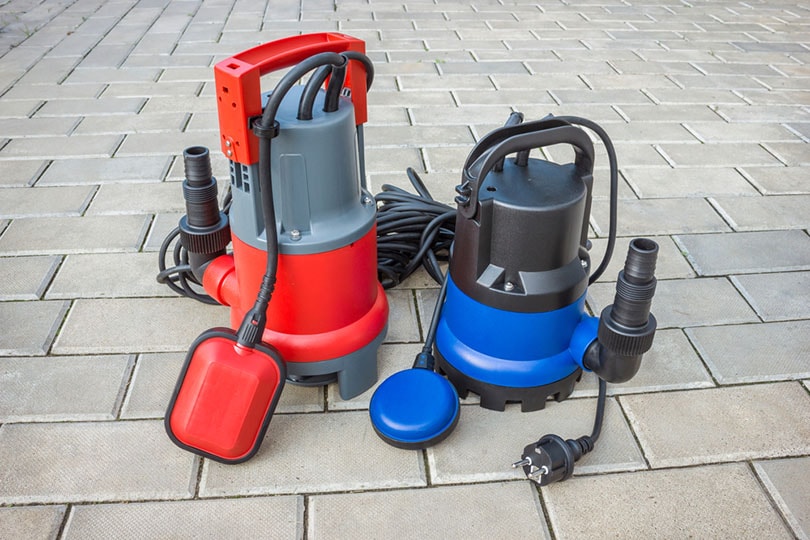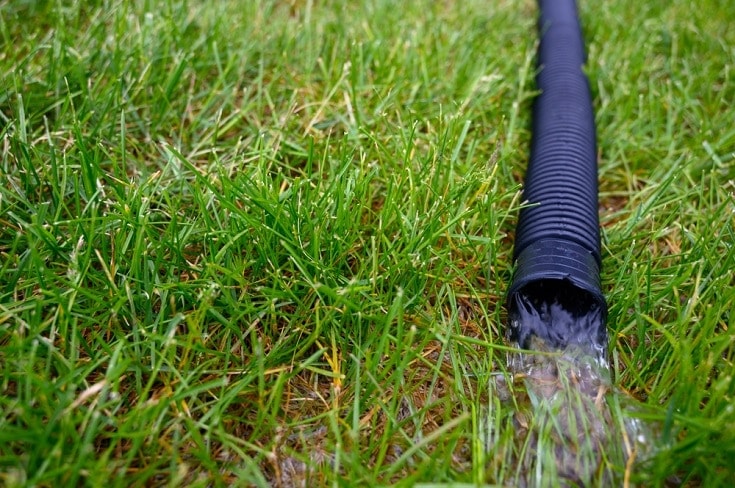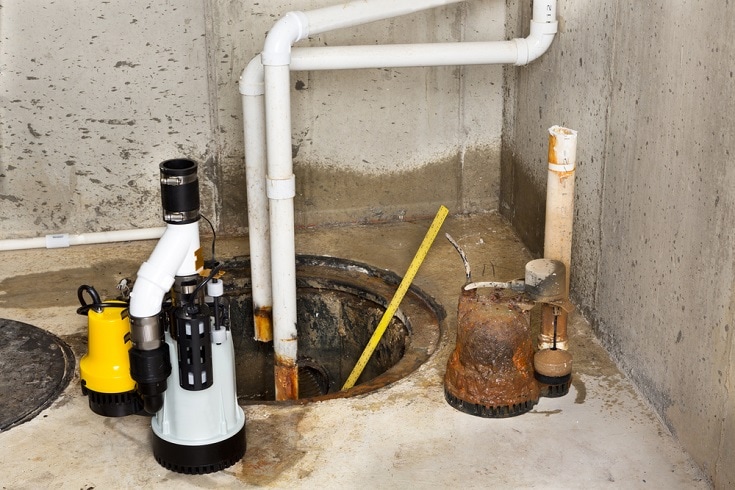What You Need to Know Before Buying a Sump Pump
-
Pete Ortiz
- Last updated:

If you’ve got a basement, you are going to deal with some moisture issues. But in many cases, it never becomes a serious problem, and a dehumidifier will manage to keep things in check. That said, there are plenty of homes with basements that are prone to flooding. Your best bet is to avoid ever purchasing such a home in the first place. That’s not always an option though.
If you find yourself living in a home with some serious water issues in the basement, then you might need to install a sump pump. Before you do, there are some things that you need to be aware of, which we’re going to discuss in this article.
What Does a Sump Pump Do?
So, the first and most obvious question is: what does a sump pump do? Put simply, a sump pump evacuates water from your home. When your basement floods, the sump pump will pump all the accumulating water out of the home to a safe place outside where it won’t cause damage.
Sump pumps can be located above your basement floor or beneath it. There will be a large pit that appears to be a hole in your basement floor, signifying that there’s a sump pump.
If your basement floods and you don’t have a sump pump the water could just sit there, destroying your home. Even once it is gone, the damage will remain. But a sump pump will prevent the water from reaching such a height. As soon as flooding begins, the pump begins to evacuate the water. If your pump is powerful enough, it should get rid of the water fast enough to avoid flooding in the first place.
Do You Need a Sump Pump?
Now that you know what a sump pump is and what it does, the next obvious question is: do you need one? Luckily, you can answer this question quite easily by asking another question: Does your basement flood? If the answer is no, then you won’t need a sump pump. But if your basement does flood, then you need some way of getting rid of that water before it builds up.
Are There Other Options?
If your home has a sump pump now, then replacing it won’t be too big of a deal. But if your home has flooding problems and no sump pump, installing a new one could be a major hassle and expense. It requires a big hole in the foundation of your home, lots of piping, digging, and expensive equipment. But a sump pump isn’t the only way to get excess water out of your basement.

Look for the Simplest Explanation
Sometimes, the flooding your home is experiencing could be the result of something simple. For instance, gutters that drain into the wrong area might be the cause of your flooding problems. In such a situation, all it takes to stop the flooding is to route the gutters to a more acceptable place.
Similarly, a deck, patio, driveway, or walkway that’s slanted towards your home could be inadvertently pouring hundreds of gallons of water directly against your home’s foundation every time it rains. Leveling such places could solve your flooding problem.
Try Installing an Outdoor Curtain Drain
You can even try installing an outdoor curtain drain and diverting the water to another area. This might even allow you to build a small outdoor pond to send the water to.
If installing a curtain drain, rerouting your gutters, or leveling off a structure that’s sending water toward your home doesn’t seem to do the trick, then a sump pump might be your only option.
- Related read: How Long Does a Sump Pump Last on Average?
Picking the Right Pump
Once you’ve determined that a sump pump is the best or only solution to your flooding problems, you’ll need to pick a pump. You’ve got some options here to choose from. Regardless of what pump you pick, you’ll want to follow these guidelines:
- You’re looking for a sump pump with a cast-iron core. Some pumps have plastic cores, and while they’re cheaper, they won’t hold up as long. You don’t want to replace the sump pump again anytime soon, so longevity is key. A cast-iron core dissipates heat better, offering a longer lifespan over cheap plastic parts.
- Some sump pumps clog up often, which will allow the water to flood and defeat the point of having a sump pump at all. To avoid this, look for a pump with an intake that has no screen and an impeller that’s built to handle solids that are up to ½-inch in size.
- If your sump basin has room for it, a submersible pump is the best choice. It will allow you to cover the sump pit, which drastically reduces the noise from the pump, while also preventing debris from falling in.
- Find a pump with an alarm. That way, if the water starts to rise, you’ll know about it instantly, rather than finding out after it’s already too late.
- You want a pump with a mechanical switch, not a pressure switch. Similarly, opt for a solid float that can’t become waterlogged. If it gets waterlogged, it might fail to shut off, which could cause the pump to burn out.

Backups and Secondaries
If your basement starts to flood, a sump pump could save you thousands of dollars in damage or more. But that only works so long as the pump does. Sump pumps, like all technology, can fail. If your sump pump fails at a critical moment, you could end up with a flooded basement and a lot of damage to deal with. This is exactly why a backup pump is recommended.
A backup pump will be installed directly beside your main pump. It’s designed to start pumping and prevent a flood in case your main pump fails or can’t handle the high volume of water coming into your home.
You can install several pumps together. Packages are even available with as many as three pumps designed to be installed together. But a cheaper bet is to install a water alarm that will alert you if the water level gets too high, indicating that your sump pump isn’t functioning. Then, keep a spare sump pump on hand to replace the main one immediately if it fails.
Another thing that prevents a sump pump from saving your home is a lack of power. When the power shuts off, so will your sump pump. But you can install a battery backup that will ensure your pump keeps your basement dry, even when there’s no power.
No matter how you set up your sump pump and how many you have, you’ll want to make sure to test them regularly. All of those sump pumps won’t do any good if they fail to work when you need them most. So, test them at regular intervals so you never experience any unfortunate and expensive surprises.
In Conclusion
Hopefully, this article has helped you determine that you don’t require a sump pump at all. But if you’re one of the many people whose home needs help to prevent flooding and damage, then a sump pump might be a necessary addition. In that case, we hope that the information in this article has helped to clarify your needs so you can get the right equipment and prevent any catastrophic issues in the future. A flooded basement is never fun, but with the right knowledge and equipment, it can usually be avoided.
See Also:
- Should There Be Water in Your Sump Pump Pit? What You Need To Know!
- How Often Should a Sump Pump Run?
- 10 Best Sump Pumps
Featured Image Credit: Sever180, Shutterstock
Contents



